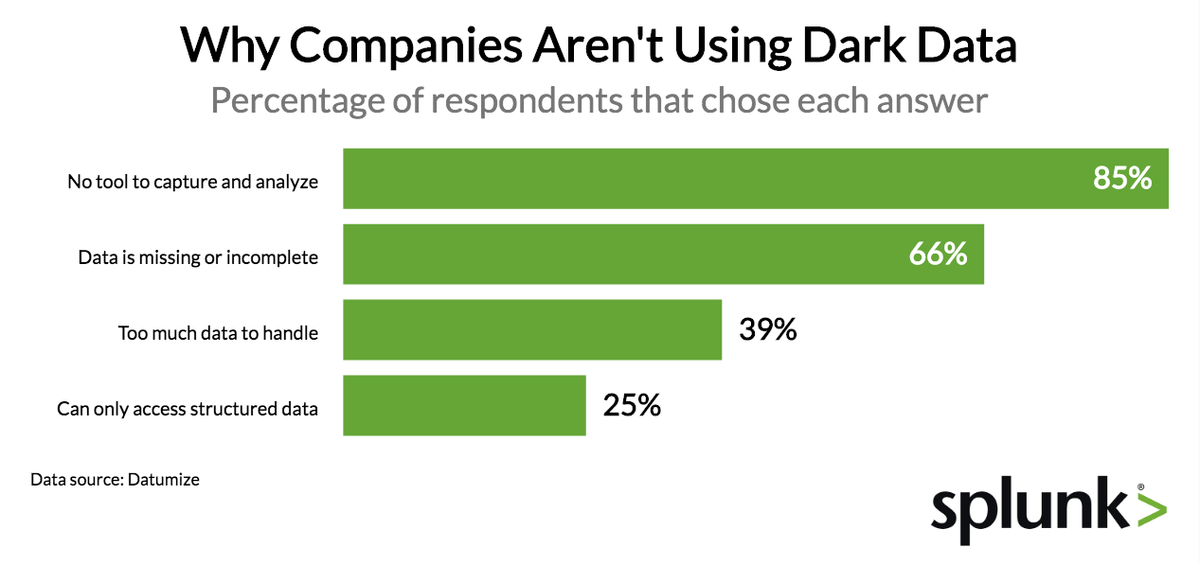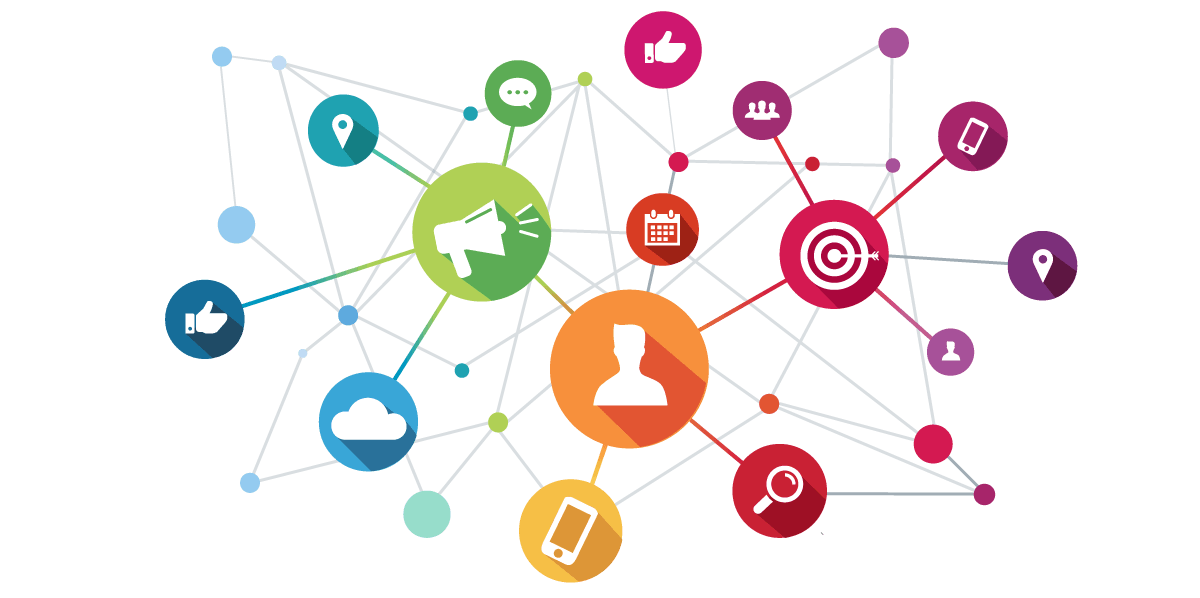Of all the advancements in modern advertising, few are more exciting than machine learning. It’s changing the way businesses collect and analyze data and even automating ad copywriting with AI.
But with revolutionary technology comes big questions. What, why, and how does it work? Today we answer these and more.
What is machine learning in advertising?
Machine learning in advertising refers to the process by which ad technology takes in data, analyzes it, and formulates conclusions to improve a task. In simpler terms: it’s how ad tech learns.
What it learns depends on the tech. It could be anything related to advertising: media buying, customer journey mapping, audience segmentation, etc.
The more data a machine learning technology processes, the more it learns about that task, and the better it gets at completing it. Just as a human would.
The difference between machine learning and artificial intelligence

You’ll often hear the terms “machine learning” and “artificial intelligence” used in conversations about today’s most sophisticated technologies. They’re related, but it’s important to know they’re not interchangeable.
While machine learning refers to a specific process: Machines using data to “learn” and improve their functioning, artificial intelligence is a broader term. It refers to technologies that can perform tasks traditionally requiring human intelligence. Machine learning, therefore, is an aspect of artificial intelligence, but it is not synonymous with AI.
Why machine learning?
From digital transactions and retail stock to the temperature of server rooms, there’s little the modern business can’t track.
And although more data means more opportunities to improve, that’s only true if you have what you need to analyze it. Unfortunately, most businesses do not.
Reports show that more than half of today’s data goes unused. Known as “dark data,” the top reasons it’s not being used are as follows:

Lack of tools, missing data, too much data, and siloed systems are all keeping businesses from getting the most out of their audience. At the root of all these obstacles is a simple but major problem: Humans can’t do it all anymore. There’s just too much to identify, collect, and process.
The solution?
Orchid Richardson, vice president and managing director at the IAB’s Data Center of Excellence, says it’s AI:
Already, 95% of advertisers have terabytes upon petabytes of demographic data, including personal data, location information, and interests they can use to target prospects they know almost nothing about. Artificial intelligence is a way to tame that data and take it to the next level.
While taming data and taking it “to the next level” with AI seems like a futuristic concept, it’s something that’s been happening for years. Still, advertisers are only beginning to scratch the surface of AI’s potential.
5 Examples of machine learning in advertising
Machine learning in advertising isn’t always easy to spot since complex processing takes place behind the scenes. There’s a good chance some of your favorite tools leverage machine learning to deliver the insights you take for granted.
Whether they’re new or tried and true, here a few of the biggest things machine learning is enabling advertisers to do:
1. Capitalize on unexpected insights

If you’re a good advertiser, you run ads with the help of targeted data. But the way you get that data isn’t perfect.
Though you might want to analyze every data point related to your offer, you’re operating with a limited budget. And that will force you to prioritize the most important data needed to run a successful ad campaign. Prioritization, depending on your budget, can mean very little data.
A less obvious issue, however, is that the assumptions you make about your offer and its audience will also limit the way you advertise. For example: If your product is a video game, you might run ads to young players and their middle-aged parents, but not consider grandparents or older players. These kinds of assumptions can cost you revenue.
At the VentureBeat Transform 2018 AI Conference, this scenario was presented by Julie Shumaker, Unity advertiser solutions VP. It’s just the type of problem machine learning can fix:
Advertisers might have very specific goals, like selling a $17 game install to a 22-year-old player, she said. They might not think about a 65-year-old woman. But machine learning may reveal that this woman is likely to spend about $3.99 over the course of three days. And if the cost of acquisition is 75 cents, it yields as good an ROI as higher-dollar goals for more typical ad targets.
For their cost-effective ability to process vast sets of data, machine learning technologies are great for uncovering revenue opportunities that budget and human assumptions may limit.
Whether they’re insights on audiences, internal processes, bidding strategies, or more, the potential for improvement can be great.
With machine learning, “you’re able to try the crazy stuff,” says John Koetsier, VP of Insights at Singular, a marketing data platform.
One of Singular’s clients, for example, took the unconventional approach of running an ad for a video game without showing any actual gameplay. The counterintuitive campaign generated a lot of conversation about the product among their target audience.
“You can try many, many things because you can let the machine then figure out in real-time what’s generating impact,” Koetsier said. “You can do stupid stuff, and sometimes stupid stuff is smart stuff.”
2. Improve ad creative
Audiences respond differently to ad creative. Media, typeface, call-to-action — these are among the creative ingredients that get people clicking or tuning out.
While many consider machine learning to involve strictly quantitative data, this isn’t the case. Rajiv Bhat, Senior Vice President of Data Sciences and Marketplace at InMobi, says that a predictive analytics system can aid in the development of better creative, too:
In such a system, data on past creatives and past campaigns are crunched to determine precisely what would work for ongoing efforts. With this application of AI, brands can get a better sense of how everything from messaging, fonts, colors, imagery, button sizes, or formats impact overall campaign performance.”
It may sound like it, but a system like this isn’t hypothetical. Bidalgo, a mobile app marketing automation platform, provides a tool that does this exactly. Called “Creative AI,” this machine learning service analyzes visual media to find creative approaches that are likely to succeed. Its CMO, Rishi Shiva, says:
Before you go investing hundreds of thousands of dollars developing video assets, you can actually run your historical images and videos through our system, and it will actually give you insights.
You can determine what creative had a positive impact on the audience. And this particular system can get as specific as the way people are posing in images. After that’s done, the software delivers a creative brief for content teams based on the analysis.
A similar application of machine learning, detailed in the Journal of Consumer Psychology, involves a research project that matches images to personality types. In it, researchers used algorithms to identify 89 different features for images, including hue, saturation, color diversity, level of detail, number of people, and more.
The 745 participants in the study were asked to rate images on a scale of 1-7. When they were done, they completed a personality test that rated them in five areas: openness, conscientiousness, extroversion, agreeableness, and neuroticism. Then, they attempted to discover which images appealed to which personality traits. Among other things, they discovered:
- Extroverted people preferred simple images and images that featured people
- Open-minded people favored pictures with no people and with cool colors like blue and black
- People high in neuroticism liked calm and minimally stimulating scenes
In a follow-up study, researchers found that subjects preferred ad images that suited their personalities. But more importantly, the machine learning algorithm found that the relationship between personality type and image type could affect a consumer’s interest in a product. People didn’t just prefer images that matched their personalities. They reported more favorable attitudes and purchase intentions towards these brands, too.
3. Boost contextual relevance
In theory, designing a great ad should be enough to generate a great response from your target audience. Of course, it’s never that easy.
On top of being well-designed, your ad needs to run on the right platform, with the right targeting, at the right time. Bhat says this is also a process that machine learning is improving:
For example, it’s possible that creatives with more color contrast perform better at night, or that ads that feature sports stars do best on the weekend. AI can provide this level of granularity and insights to ad creative development and performance.
Contextual relevance is becoming more important now that regulators are cracking down on the data usage. GDPR has placed restrictions on data, and other countries are following suit.
Instead of relying strictly on audience data, machine learning technologies are increasingly used to processing on-page data. And they’re doing it in ways that are so complex they’re almost human. Harmon Lyons, Senior Vice President of Global Business Development at IAS, says:
Current advancements are blurring the lines between human and machine as evident in applications like sentiment analysis -- machines are increasingly able to identify and categorize the opinions expressed in a piece of text, in order to determine whether the writer’s attitude towards a particular topic or product is positive, negative, or neutral.
Nuance here is always evolving as language expands and includes things like sarcasm and emoticons to express meaning. Rapid advances in deep learning are allowing computers to process images and video in a more human-like way.
On a foundational level, an understanding of a page’s content can help advertiser and publisher serve more relevant advertising. At a more complex level, it’s allowing advertisers to do some impressive things.
Vodafone example
Consider an example from Vodafone in the UK, which wanted to advertise that it would carry the iPhone X. As a result of Apple’s highly restrictive brand usage guidelines, the company had a hard time actually mentioning the product.
So, they tapped into machine learning technology from GumGum. When deployed, this technology analyzed on-page images to find iPhone ads, and then placed Vodafone ads on top of them. This was clear enough for consumers, who understood the company would carry the iPhone based on the ads’ association.
Jeep example
Jeep, another GumGum client, decided to skip behavioral modeling and instead capitalize on context. With its machine learning technology, the company scanned web pages for images of models that competed with their Cherokee, like the Toyota RAV4. Then, like Vodafone, they placed their ads on top of competing models.
Beyond these use cases, machine learning can do great things for brand reputation. With the increased instance of programmatic ads running in placements that are brand unsafe (like next to extremist content, for example), machine learning can help advertisers prevent a PR nightmare before it happens, and avoid having to boycott a site and its potentially massive audience (like many were forced to do with YouTube.)
4. Target more defined segments
Every advertiser’s goal is peak relevance. And the way to relevance is segmentation. The narrower your audience segments become, the closer you get to delivering the 1:1 personalization that customers crave.
But to get anywhere near 1:1 personalization, you need a massive amount of data, to begin with. Then, you need a sophisticated enough machine-learning algorithm to sift through the data and turn it into something usable.
Luckily, these are both features of major networks like Facebook, Google, and LinkedIn. They amass vast collections of data on their users — hobbies, interests, location, job titles, etc. — which advertisers can use to narrow their target segments. Gil Allouche, Co-Founder and CEO at Metadata.io, says data like this so valuable is it makes it easier to work with other data:
Not to get too “meta” here, but metadata is information that provides information about other data. Let’s say that again in a different way: Metadata summarizes basic information about data, which makes finding and working with particular instances of data easier. According to Smart Insights, “metadata paints a picture about an individual’s daily routine, interactions, points of view and associations, and the reason it is so useful is that it doesn’t lie.
When you assemble this kind of data, you get what Gil and the team at Metadata.io call a “‘love note’ for future business insights” because it’s “an expression of truth in written form.”
For businesses, truth in the form of customer information isn’t easy to come by. So, when it’s collected in abundance and leveraged by networks like Facebook and Google, it becomes a valuable way to significantly narrow your target audience to one more likely to claim your offer.
Facebook collects data and allows you to create audiences. Even more importantly, the platform uses machine learning to determine who among that audience is most likely to complete the objective you’re bidding for.
At the same time, this practice is worthless if you simply narrow your target audience and deliver the same ad experience. Gil is right when he says “The best ads today are compelling, personalized content with real meaning for a brand’s audience.”
Each audience should have an ad personalized based on its data. And to continue that experience, each ad should direct users to a post-click page that is equally as personalized.
Take this example from Abreva, who created 119 different ads for their product based on the context it was viewed in. When customers encountered the ad in a video about, say, celebrity gossip, they would be shown an ad like this:

But if they saw an ad while watching a video tutorial, they would see something like this:

The personalized campaign led to a major boost in awareness and consideration. Abreva generated a 41% lift in ad recall and a 342% boost in search interest on Google and YouTube.
On other networks, like Google search, machine learning makes the process even quicker. With responsive search ads, you can input multiple versions of headline, copy, and description, and Google will test and serve the one best performer. On average, the advertisers who use this feature will generate a 15% boost in clicks.
Third-party platforms like HubSpot’s dedicated content personalization tool can also take tailored experiences beyond just ad creatives. These allow you to personalize landing pages, regular pages, and emails with segmentation data from your CRM to ensure your personalization strategy is consistent and present throughout the entire marketing funnel.
5. Bid more strategically
In programmatic advertising, not all impressions are worth what you’re willing to bid on them. Some are. And some are worth even more.
Thanks to demand-side platforms, evaluating these impressions no longer requires guesswork. Using machine learning technology, these platforms can make bids and optimizations that once required experienced buyers.
Take Google’s Smart Bidding, for example: an automated bidding strategy that uses machine learning to optimize for conversions, or conversion value, in every auction. This is known as “auction-time bidding.” According to Google, there are five types of Smart Bidding strategies:
-
- Target CPA: Target CPA sets bids to help get as many conversions as possible at or below the target cost-per-action (CPA) you set.
-
- Target ROAS: Target ROAS lets you bid based on a target return on ad spend (ROAS). This strategy helps you get more conversion value or revenue at the target return-on-ad-spend (ROAS) you set.
-
- Maximize Conversions: Maximize conversions automatically sets bids to help get the most conversions for your campaign while spending your budget.
- Enhanced CPC: Enhanced cost-per-click (ECPC) helps you get more conversions from manual bidding. ECPC works by automatically adjusting your manual bids for clicks that seem more or less likely to lead to a sale or conversion on your website.
Which you choose depends on the goal of your campaign, your budget, and other factors. Regardless, you can be confident that Google’s Smart Bidding algorithm is well-trained. It’s constantly acquiring and analyzing data, according to Google, to understand which bids and impressions are most effective for your chosen goal. This data contains a far wider range of parameters than any single team or person could process.
It includes basic factors like device and location, which can be adjusted manually, as well as automatic signals that are unique to Smart Bidding. These are far greater in number. You can find several here, including site behavior, product attributes, web placement, and more.
Since Smart Bidding can optimize based on data from all your campaigns, even new ones can see increased performance. Still, you shouldn’t make any business decisions based on campaign results until you have a big enough sample: at least 30 conversions (50 for Target ROAS), and/or over a month of running time.
Start using machine learning to boost conversions
Advertisers always look forward to better applications of current technologies. That’s the case with machine learning as much as any other: better chatbots, voice recognition, image processing, etc.
But machine learning can have a major positive impact on your campaigns today. Bidding strategies, creative, and most of all, personalization, can improve exponentially when you find a machine learning model that works for you. Undoubtedly, there’s something for everyone. Even if it’s just Smart Bidding, or Google’s responsive search ads.
Learn how to get even more out of your machine learning efforts by connecting personalized post-click landing pages from Instapage. Get a demo here.

See the Instapage Enterprise Plan in Action.
Demo includes AdMap™, Personalization, AMP,
Global Blocks, heatmaps & more.
